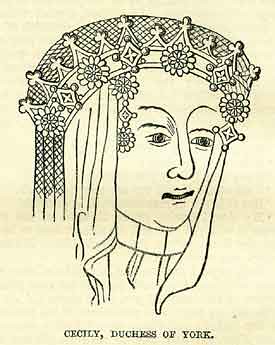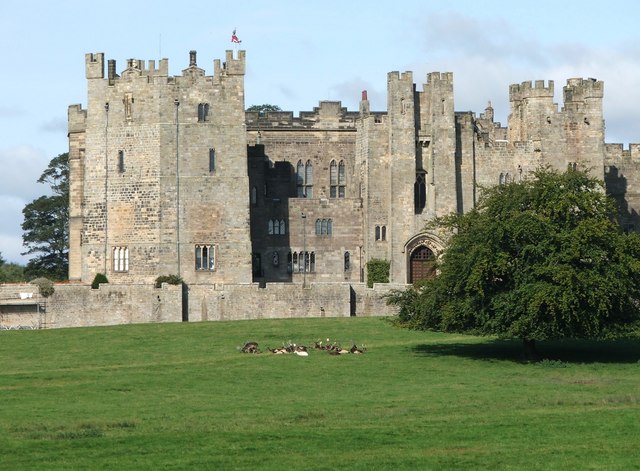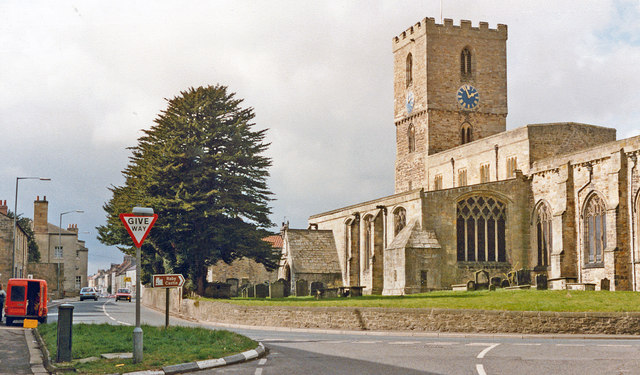Cecily Neville, Duchess of York, mother of King Edward IV and Richard III, Grandmother of Queen Elizabeth of York, Maternal great-grandmother of Henry VIII and his siblings

-
Description
Cecily Neville, Duchess of York (3 May 1415 – 31 May 1495) was the mother of two Kings: Edward IV of England and Richard III of England. Cecily Neville was a daughter to Ralph Neville, 1st Earl of Westmorland and Joan Beaufort, Countess of Westmorland. Her maternal grandparents were John of Gaunt, 1st Duke of Lancaster and Katherine Swynford. John of Gaunt was the third son of Edward III of England and Philippa of Hainault. Cecily was called "the Rose of Raby" (because she was born at Raby Castle in Durham, Kingdom of England) and "Proud Cis" because of her pride and a temper that went with it. Historically she is also known for her piety. She herself signed her name "Cecylle". At the age of ten in 1425, Cecily's father betrothed her to Richard Plantagenet, 3rd Duke of York the leader of the House of York in the Wars of the Roses, who was 14 at the time. Soon afterwards, Earl Neville died in battle. The couple probably lived in the household of king Henry VI until 1437 when they were officially married. Their daughter Anne was born in August 1439 in Northamptonshire. When Richard became a king's lieutenant and governor general of France in 1441 and moved to Rouen, Cecily moved with him. Their son Henry was born in February but died soon after. The future king Edward was born in Rouen in 28 April 1442 and immediately privately baptised in a small side chapel. He would later be accused of illegitimacy directly by his cousin, Richard Neville, 16th Earl of Warwick, and by his own brother, George; but this was probably because George, teamed with Richard were in dispute with Edward. The claims would later be dismissed. Some modern historians use Edward's date of birth as an evidence of bastardy: the Duke had been away in the calculated days of conception and the baby's baptism was a simple and private affair (unlike that of his younger brother, George, which was public and lavish). Although some historians suggest that the baby was prematurely born, there are no surviving records of this. Other historians point out that Cecily's husband could easily, by the military conventions of the time, have returned briefly to Rouen, where Cecily was living at the time. In any case, Richard acknowledged the baby as his own which establishes legal paternity. Around 1454, when Richard began to resent the influence of Edmund Beaufort, 1st Duke of Somerset, Cecily spoke with Queen consort Margaret of Anjou on his behalf. When Henry VI suffered a nervous breakdown later in the year, Richard of York established himself as a Protector. After the outbreak of the War of the Roses, Cecily remained in Ludlow even when Richard fled to Ireland and Continental Europe. They were probably in the custody of Cecily's sister Anne Neville, wife of Humphrey Stafford, 1st Duke of Buckingham. At the same time she surreptitiously worked for the cause of the House of York. When a parliament began to debate the fate of the lords of York in November 1459, Cecily travelled to London to plead for her husband. One contemporary commentator stated that she had reputedly convinced the king to promise a pardon if the Duke would appear in the parliament in eight days. This failed and Richard's lands were confiscated, but Cecily managed to gain an annual grant of £600 to support her and her children. In January 1460 she visited Kent and possibly talked about the forthcoming alliance with the representatives of the House of Kent. After the Yorkist victory the next July, Cecily moved to London with her children and lived with John Paston. She carried the royal arms before Richard in triumph in London the next September. When Richard was officially accepted Henry VI's heir, Cecily became a queen-in-waiting and even received a copy of the English chronicle from the chronicler John Hardyng. In the Battle of Wakefield (30 December 1460), Lancastrians won a decisive victory. The Duke of York, their second son Edmund, Earl of Rutland and her brother Richard Neville, 5th Earl of Salisbury were among the casualties. Cecily sent her youngest sons to the court of Philip III, Duke of Burgundy. This forced Philip to ally with the Yorkists. Her eldest son Edward successfully continued the fight against the Lancastrians. When Cecily moved to Baynard's Castle in London, it became the Yorkist headquarters and when Edward defeated the Lancastrians, she became an effective Queen Mother. During the beginning of the Edward's reign, Cecily appeared beside him and maintained her influence. In 1461 she revised her coat of arms to include the royal arms of England, hinting that her husband had been a rightful king. When Edward married Elizabeth Woodville, he built the new queen's quarters for his queen and let his mother to reside in the old quarters she was used to. In 1469, Richard Neville, 16th Earl of Warwick, father-in-law of her son George Plantagenet, 1st Duke of Clarence, rebelled against the king. He also begun to spread rumours that Edward IV was a bastard and that his true father was an archer named Blaybourne at Rouen evidence of which has been assembled [1]. That would have meant that his brother was a rightful king. Neville had earlier made similar accusations against Margaret of Anjou. This story features in the plot of C. J. Sansom's historical crime novel Sovereign (2006). Cecily Neville said little about the matter in public, despite of the fact that she was accused of adultery. She visited Sandwich, possibly trying to reconcile the parties. When the rebellion failed the first time, she invited Edward and George to London to reconcile them. Peace did not last long and in the forthcoming war she still tried to make peace between her sons. By 1485 Cecily was alone. Her husband and three sons had died in The War of the Roses. She devoted herself to religious duties and her image of piety comes from those times. Cecily Neville died in 31 May 1495 and was buried in the tomb with Richard and their son Edmund at Fotheringhay Church, Northamptonshire with a papal indulgence. -
Owner
lisby1 -
Source
Flickr (Flickr) -
License
What does this mean? Public Domain Mark
-
Further information
Link: https://www.flickr.com/photos/60861613@N00/3848199169/
Resource type: Image
Added by: Pat Thomson
Last modified: 8 years, 11 months ago
Viewed: 6481 times
Picture Taken: Unknown -
Co-Curate tags



